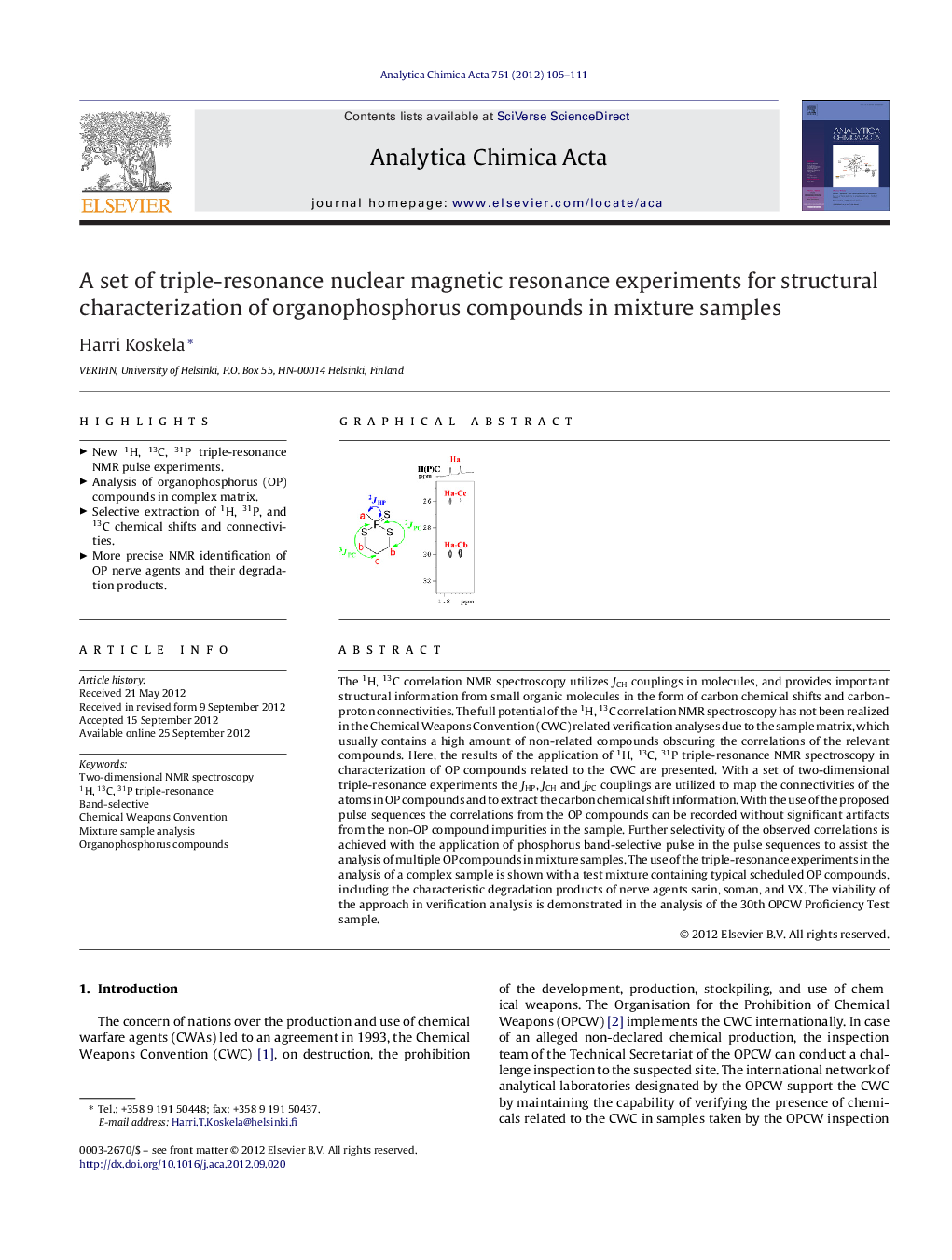| Article ID | Journal | Published Year | Pages | File Type |
|---|---|---|---|---|
| 1165150 | Analytica Chimica Acta | 2012 | 7 Pages |
The 1H, 13C correlation NMR spectroscopy utilizes JCH couplings in molecules, and provides important structural information from small organic molecules in the form of carbon chemical shifts and carbon-proton connectivities. The full potential of the 1H, 13C correlation NMR spectroscopy has not been realized in the Chemical Weapons Convention (CWC) related verification analyses due to the sample matrix, which usually contains a high amount of non-related compounds obscuring the correlations of the relevant compounds. Here, the results of the application of 1H, 13C, 31P triple-resonance NMR spectroscopy in characterization of OP compounds related to the CWC are presented. With a set of two-dimensional triple-resonance experiments the JHP, JCH and JPC couplings are utilized to map the connectivities of the atoms in OP compounds and to extract the carbon chemical shift information. With the use of the proposed pulse sequences the correlations from the OP compounds can be recorded without significant artifacts from the non-OP compound impurities in the sample. Further selectivity of the observed correlations is achieved with the application of phosphorus band-selective pulse in the pulse sequences to assist the analysis of multiple OP compounds in mixture samples. The use of the triple-resonance experiments in the analysis of a complex sample is shown with a test mixture containing typical scheduled OP compounds, including the characteristic degradation products of nerve agents sarin, soman, and VX. The viability of the approach in verification analysis is demonstrated in the analysis of the 30th OPCW Proficiency Test sample.
Graphical abstractFigure optionsDownload full-size imageDownload as PowerPoint slideHighlights► New 1H, 13C, 31P triple-resonance NMR pulse experiments. ► Analysis of organophosphorus (OP) compounds in complex matrix. ► Selective extraction of 1H, 31P, and 13C chemical shifts and connectivities. ► More precise NMR identification of OP nerve agents and their degradation products.
